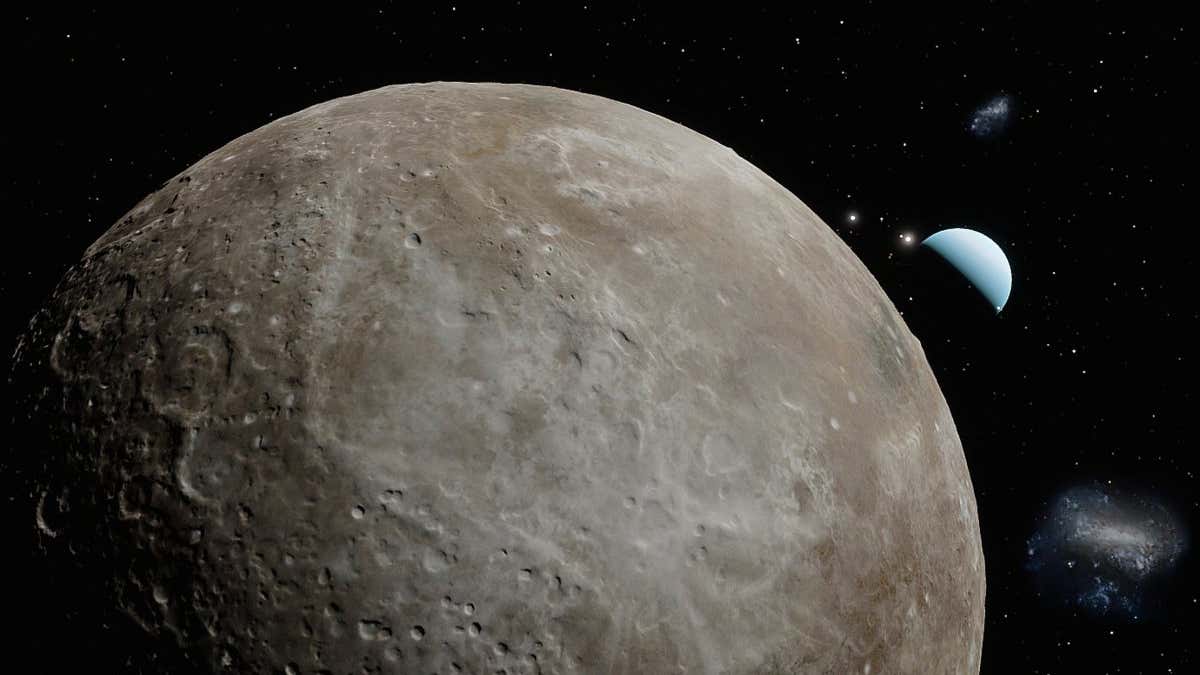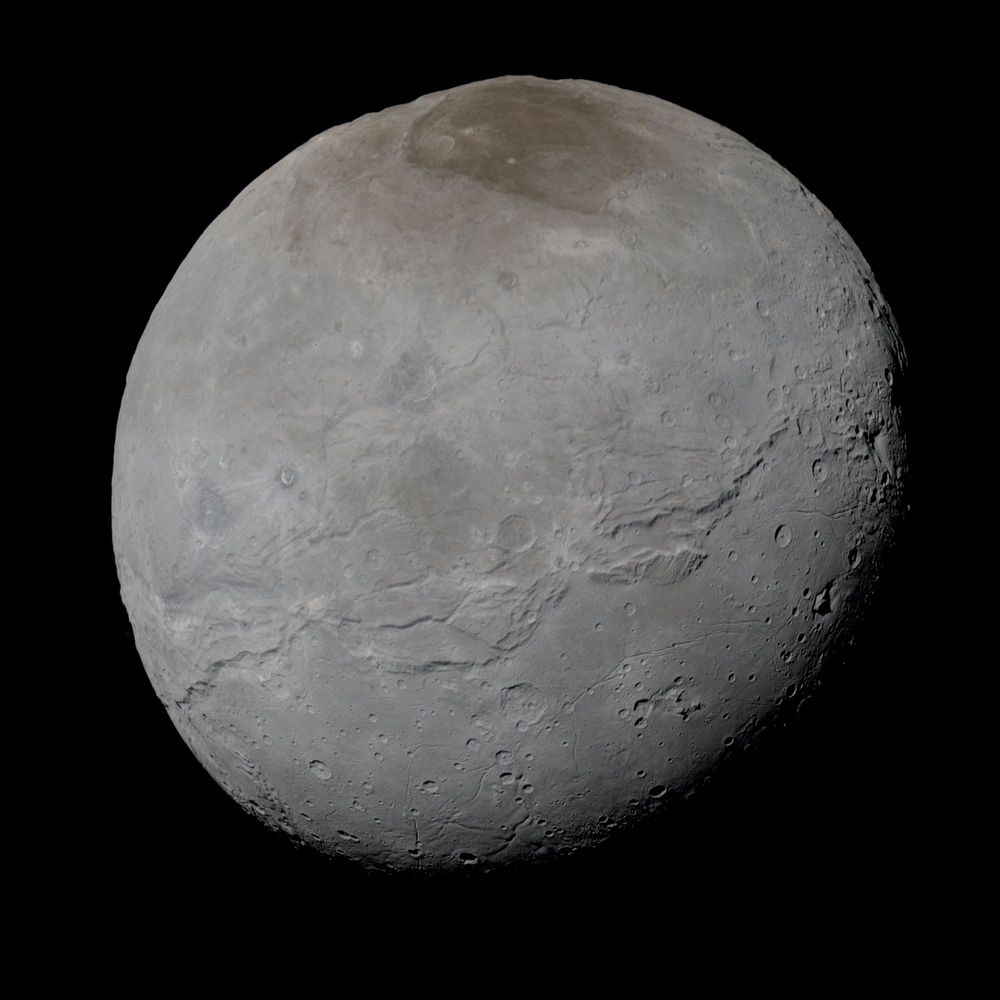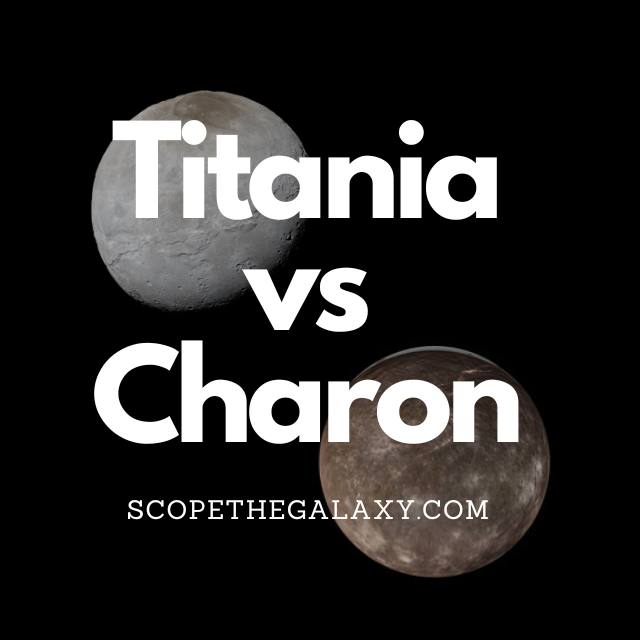*This post may contain affiliate links. This means we may make a commission if you purchase an item using one of our links*
The main differences between Titania and Charon are that Titania is the bigger of the two with a diameter of 1576.8km while Charon’s diameter is 1,212km, Charon orbits Pluto while Titania orbits Uranus and Titania may have water ice under its surface whereas Charon is unlikely to have the same.
There are various other differences between the two so, continue reading for a more detailed look at each of these natural satellites along with their similarities and differences below.
What Is The Moon Titania?
Table of Contents

Titania is the biggest of Uranus’s moons, with a circumference of 4,956km and a diameter of 1576.8km.
The high density of this moon suggests that it most likely formed from a collection of dust and debris leftover from the formation of Uranus or from the debris created in the collision that reportedly tilted Uranus onto its side. As a result Titania has a mass of 3.4 × 10^21 kg.
First discovered on 11th January 1787 (the same day as the discovery of Oberon, the second biggest moon of Uranus) by British astronomer William Herschel, the name “Titania” comes from the Shakespeare play, A Midsummer Night’s Dream. (Most of Uranus’ moons are named after Shakespeare’s characters.)
Having observed Titania for many years, scientists theorize that its composition is likely to be equal parts ice and rock, the latter of which may contain carbonaceous materials and organic compounds.
Research suggests that the moon most likely has a rocky core (accounting for 66% of the moon’s radius) and an icy mantle. If the mantle contains ammonia, it will act as antifreeze and make it possible for liquid water to exist. In this instance, the moon could possess a layer of liquid ocean around 50km thick.
Titania tilts slightly towards the equator of Uranus and is tidally locked to its planet. This means a Titania day is 8 days and 17 hours which would be the same for its orbital cycle. Titania has an average temperature of -203 degrees Celsius.
The planet Uranus is also tilted, with the moons orbiting on the equatorial plane, giving it extreme seasons. On Titania, the north and south poles experience 42 years of complete sunshine followed by 42 years of total darkness.
Scientists have observed the presence of large amounts of carbon dioxide, suggesting this may be the primary component of this moon’s atmosphere. Thanks to the tilted orbit, and a concentration of solar radiation from the poles, Titania probably maintains a carbon dioxide cycle, similar to the hydrogen cycle on Earth.
What Is The Moon Charon?

Charon is the largest of Pluto’s moons, first discovered on 22nd June 1978. The surface of this icy world is frozen with nitrogen and methane ice; it may also hold some water ice. While Pluto possesses a reddish hue, Charon is closer to a neutral shade of grey; this suggests the two bodies have different compositions.
Scientists named this moon after the mythical ferryman, Charon, who once carried souls across the Acheron river. This river is one of five legendary rivers that could lie beneath the surface of Pluto.
The formation of Charon remains something of a mystery to scientists. However, this moon may have formed around 4.5 billion years ago when an object traveling at immense speed collided with Pluto. Its average distance from the Sun is approximately 3.6 billion km.
Charon is almost half the size of its planet at 1,212km, where scientists refer to these two bodies as a “double dwarf planet system,” and the chilly temperatures vary from minus 23 to minus 258 degrees Celsius.
Charon takes 153 hours to orbit its planet at an average distance of 19,640km, and it is tidally locked, meaning the same side of the moon always faces Pluto. Pluto also experiences a tidal lock to Charon, so the same two sides always face one another.
Among the fascinating features of this ice moon are the ice volcanoes that could exist on the surface. Observations from the Gemini observatory suggest that Charon could have a form of cryovolcanism known as ice-particle geysers.
The frigid world also has a canyon between seven and nine kilometers deep. (To put that into perspective, Mount Everest has a height of 8.8km).
Similarities Between Titania And Charon
As both are natural satellites, Charon and Titania do share a few similarities, which includes the following:
- Both have a hotter central core.
- Both have a rocky, terrestrial surface.
- Both are spherical in shape.
- Neither have rings surrounding them.
- Both are tidally locked to their planet.
- Both orbit their planet in an elliptical pattern.
- Neither have a magnetic field.
- Neither have tectonic plates.
Differences Between Titania And Charon
As for their differences, they include the below:
- Titania has a diameter of 1576.8km while Charon’s diameter is 1,212km.
- Titania orbits Uranus whilst Charon orbits Pluto.
- Titania has a very thin exosphere composed mostly of carbon dioxide while Charon has no atmosphere at all.
- A day on Titania takes 8 days 17 hours whilst a day on Charon is 153 hours.
- It takes Titania 8 days 17 hours to orbit Uranus whilst Charon orbits Pluto in 153 hours.
- Charon orbits Pluto from an average distance of 19,640 km whilst Titania is 435,840km away from Uranus.
- Titania’s average temperature is around -203 degrees Celsius whilst Charon’s temperature ranges from -23 to -258 degrees Celsius.
- Charon’s density is 1.71 g/cm³ whilst Titania’s density is 1.71 g/cm³.
- Charon’s mass is 1.58 × 10^21 kg whilst Titania’s mass is 3.4 × 10^21 kg.
- Titania’s gravitational strength is 0.367 m/s² whilst Charon’s gravity is 0.288 m/s².
- Titania may have a water under its surface while Charon is unlikely to have the same.
Summary
Both Charon and Titania are natural satellites, are tidally locked to their respective planets and are rock based however, they are still unique when you breakdown their features
Whether it be in regards to their mass, size, gravitational strength, the distances at which they orbit their respective planets and more, Titania and Charon are still very distinct celestial bodies in their own right

